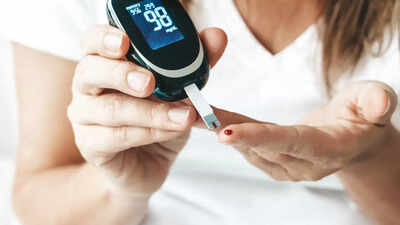Diabetes develops gradually, not suddenly. Long before a formal diagnosis, the body sends subtle signals indicating rising insulin resistance. Many people overlook these early warning signs, often attributing them to stress, fatigue, or lifestyle habits. Recognising these indicators is crucial because timely action can help reverse insulin resistance naturally and prevent type 2 diabetes. Dipika Rampa, a gut health and metabolic wellness coach from Noida, explains that changes such as stubborn belly fat, energy crashes after meals, unexplained weight gain, and persistent cravings are early red flags. By adopting structured meal patterns, prioritising fibre and protein, incorporating post-meal movement, and building lean muscle, individuals can improve insulin sensitivity and safeguard long-term metabolic health before diabetes fully develops.
Understanding insulin resistance: The silent start of diabetes
Before blood sugar levels reach dangerous levels, the body undergoes a gradual process known as insulin resistance. Insulin is a hormone responsible for moving glucose from the bloodstream into cells for energy. When cells become less responsive to insulin, glucose remains in the blood, forcing the pancreas to produce more insulin to maintain normal levels.Dipika Rampa explains, “You do not wake up diabetic one day. It is a slow progression of insulin resistance that occurs over several years.” Constantly elevated insulin levels push the body into a fat-storing mode rather than allowing it to burn fat efficiently. In simple terms:
- High insulin levels encourage fat storage, particularly around the belly
- Low insulin levels allow the body to use fat for energy
This metabolic imbalance often goes unnoticed, as the symptoms are subtle and commonly mistaken for fatigue, stress, or poor lifestyle choices.
Early warning signs of insulin resistance
Recognising insulin resistance early can prevent the progression to type 2 diabetes. Dipika Rampa highlights several indicators that people frequently overlook:
- Persistent belly fat that is resistant to diet and exercise
- Energy crashes after meals, leaving you feeling sluggish
- Unexplained weight gain, especially around the midsection
- Skin tags, bloating, and cravings, which signal metabolic changes
These signs are often dismissed as minor lifestyle issues. However, they are critical indicators that the body’s insulin response is weakening. Identifying them early creates an opportunity for intervention and reversal.
Dietary adjustments to improve insulin sensitivity
Nutrition plays a key role in reversing insulin resistance. Dipika Rampa recommends structured meal patterns that allow insulin levels to stabilise.Frequent snacking prevents insulin from returning to baseline, keeping the body in fat-storing mode. Focusing on two to three balanced meals a day without additional snacks helps regulate blood sugar and supports fat burning.
- Add fibre before carbohydrates
Consuming fibre-rich foods such as vegetables, legumes, and whole grains before carbohydrates slows glucose absorption. This reduces blood sugar spikes after meals and keeps you feeling full for longer, lowering the risk of overeating.Protein stabilises blood sugar and supports muscle maintenance, which is essential for insulin regulation. Each meal should contain a strong protein source, including eggs, lean meat, dairy, or plant-based alternatives like beans and lentils.
- Incorporating movement to regulate blood sugar
Physical activity is another powerful tool in managing insulin resistance. Dipika advises moving after meals to improve glucose uptake by muscles. Even a ten-minute walk post-meal can significantly reduce blood sugar levels. Over time, consistent activity strengthens metabolic function and enhances overall insulin sensitivity. Muscle tissue is one of the body’s best regulators of insulin. Resistance training or bodyweight exercises help increase lean muscle mass, which consumes glucose efficiently. This improves blood sugar control and helps reverse insulin resistance naturally.In addition to nutrition and movement, other lifestyle factors influence insulin sensitivity. Prioritising sleep, managing stress, and avoiding prolonged sedentary behaviour all contribute to a healthier metabolic profile. Dipika emphasises that small, consistent adjustments in daily habits can produce significant improvements over time.Disclaimer: This article is for informational purposes only and does not replace professional medical advice. Always consult a qualified healthcare provider for diagnosis, treatment, or guidance regarding diabetes, insulin resistance, or any health condition.Also Read | THIS tiny seed could be the superfood every vegetarian is missing! Boost iron, support RBC production, and enhance overall blood health


